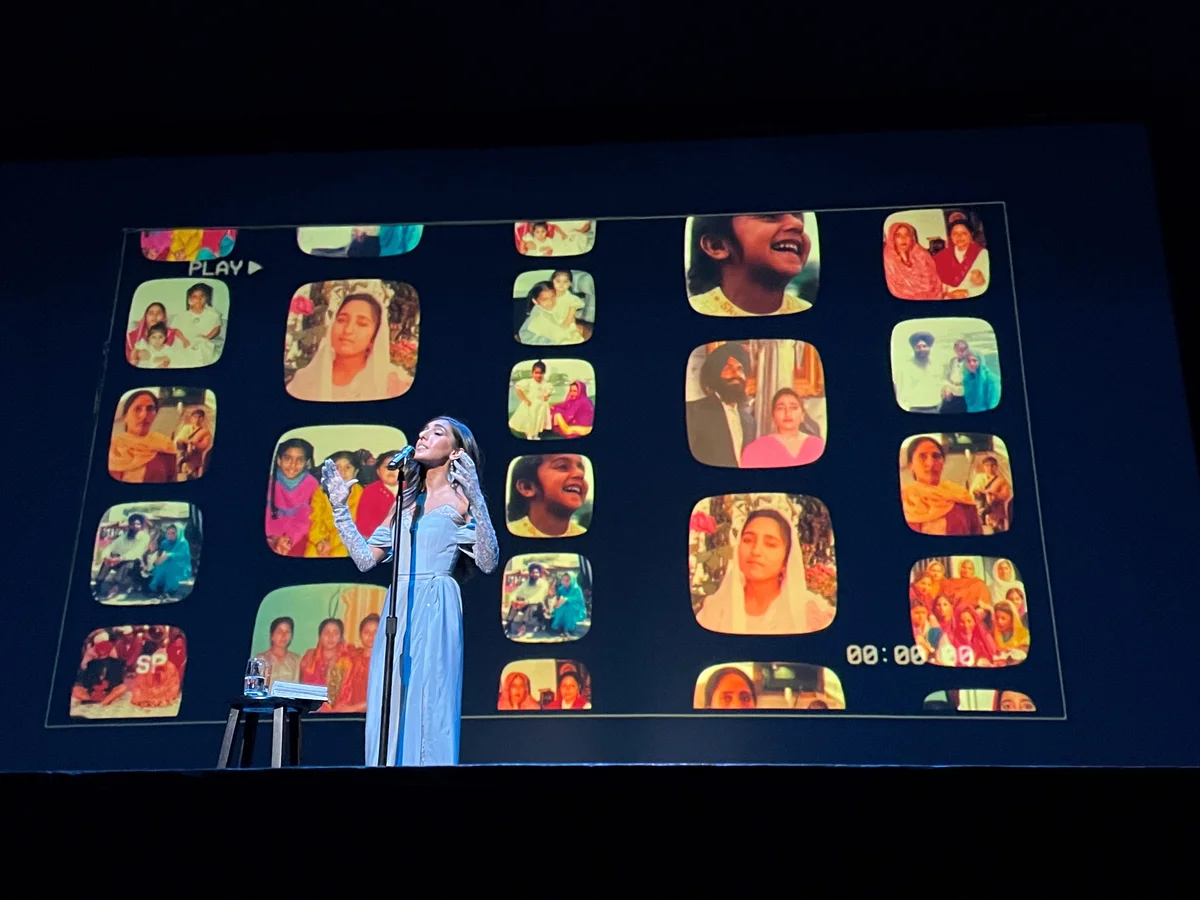
“Thank you for teaching me I can write through anything,” read the message in the guestbook at poet Rupi Kaur's November 25 reading at the Queen Elizabeth Theatre in Vancouver.
Attendees left heartfelt messages about the impact of her work, which discusses common struggles with mental health and heartbreak — as well as more specific themes relating to Kaur's experience as a Punjabi-Canadian woman. I also left a message: Kaur’s work over the years has taught me to embrace my identity, and inspire creativity.
My cousin and I were seated and eager for the show to begin when she recognized some of the music in Kaur’s pre-show playlist: “SYL” by the late Punjabi singer Sidhu Moosewala, who defined a new style of Punjabi hip-pop. "SYL" stands for Satluj Yamuna Link, a canal that connects the states of Punjab and Haryana. The song describes how the government uses Punjab’s water, representing the Indian government’s long history of violence — and the resistance and resilience of Punjabi people.
Hearing this particular song was a moment of both excitement and pride. We could not believe that such a politically-charged Punjabi song was playing at the venue filled with such a diverse group of people. That representation is a crucial aspect of what Kaur brings to cultural conversations.
Soon enough, the opening acts of the night began: Rea Mirosevic Carew and Natasha Kianipour, both local Vancouver poets.
Carew’s poetry carried similar themes to Kaur’s. Her first poem spoke to the women of the past and their struggle, and her second piece centered on menstruation and its societal stigma.
Kianipour spoke next, introducing herself as an Indian-Iranian woman. She expressed gratitude for her relatives who immigrated from Iran after the 1979 revolution. Kianipour paid tribute to the women protesting for their rights in Iran with a poem.
Once we applauded the opening acts, Kaur made her way on stage, and the audience erupted with shouts, whistles and applause. In her signature style, Kaur was wearing a stunning pale blue dress with lace gloves. All her stage looks are designed by Punjabi-Canadian designer Mani K. Jassal.
After a brief talk with the audience, Kaur began the show. The lights dimmed, soft piano music began to play and the projector began to show her illustrations. She pairs line art with poetry, which make her metaphors and words of inspiration resonantly visible. Her first poem was about depression, and the illustration represented a person’s shadow dragging them into darkness.
Kaur balanced theatrical readings of her short poems with the stories that inspired them. The backstories to her poems helped the audience to laugh with her when reminiscing on bad dates and feel her frustrations about a cheating boyfriend.
The more theatrical pieces were heavier, addressing her signature themes of mental illness, intrusive thoughts, feminism and intergenerational trauma. For me, her poem "broken english" spoke volumes. This piece addresses her immigrant parents’ early days of immigration to Canada, after leaving India following the 1984 Sikh genocide committed by the Indian Government. A backdrop of Kaur’s family pictures scrolled across the screen behind her as she read.
In the pictures I could see my parents and grandparents, as she vocalized the difficult struggles they faced.
My maternal grandfather (Nanaji) arrived in Canada in the late 60’s, when his family picked him up from the airport they took him to the barber. This was because in order to make a life in this country he had to conform. As a Sikh man my Nanaji was put into the position of cutting his hair, shaving his face and only using the name “Dave” as opposed to his given one, “Gurdev.” This story shows the tiniest glimpse into the sacrifices my grandparents made, all to open opportunities for their children.
This poem is one of many by Kaur that goes beyond words on a page — she uses her parents' struggle to write a piece that speaks to universal experience. Reading this poem years ago gave me a sense of appreciation for my family and their sacrifices. It also validated the possibility that I could cultivate my own artistry to tell my own stories.
To close the show, Kaur spoke to the criticism she receives all too often — that her books can not be considered literature. Many of Kaur’s poems are three to four lines and may seem like inspirational quotes, without the metaphors or clear rhyme schemes that are often associated with poetry.
But as we all know, art is extremely subjective. Kaur has pieces that may only speak to Punjabi people, women, young adults or all of the above, which does not stop the work from being literature. There is so much power in seeing art that reflects your own stories, especially if yours is one that has otherwise been ignored.

